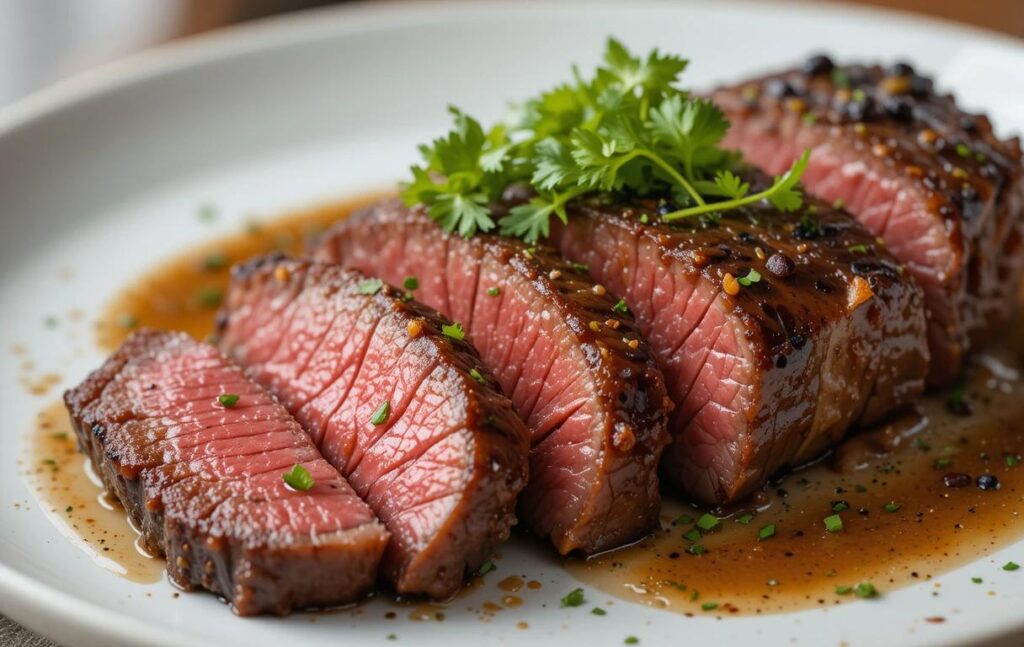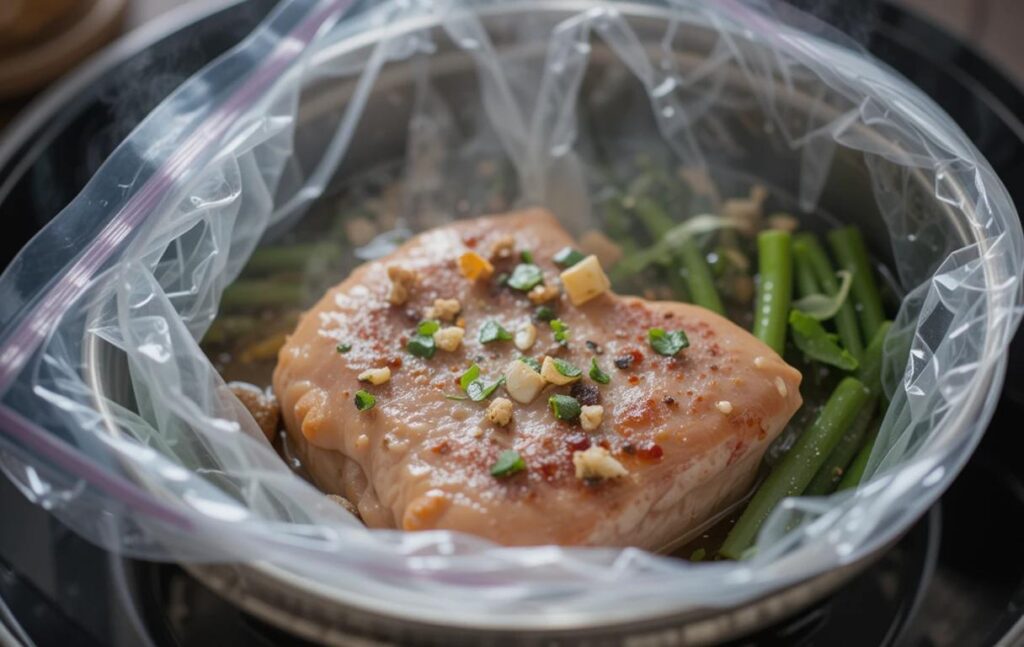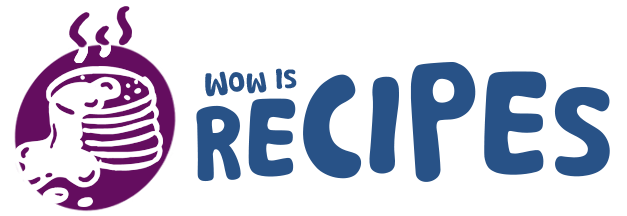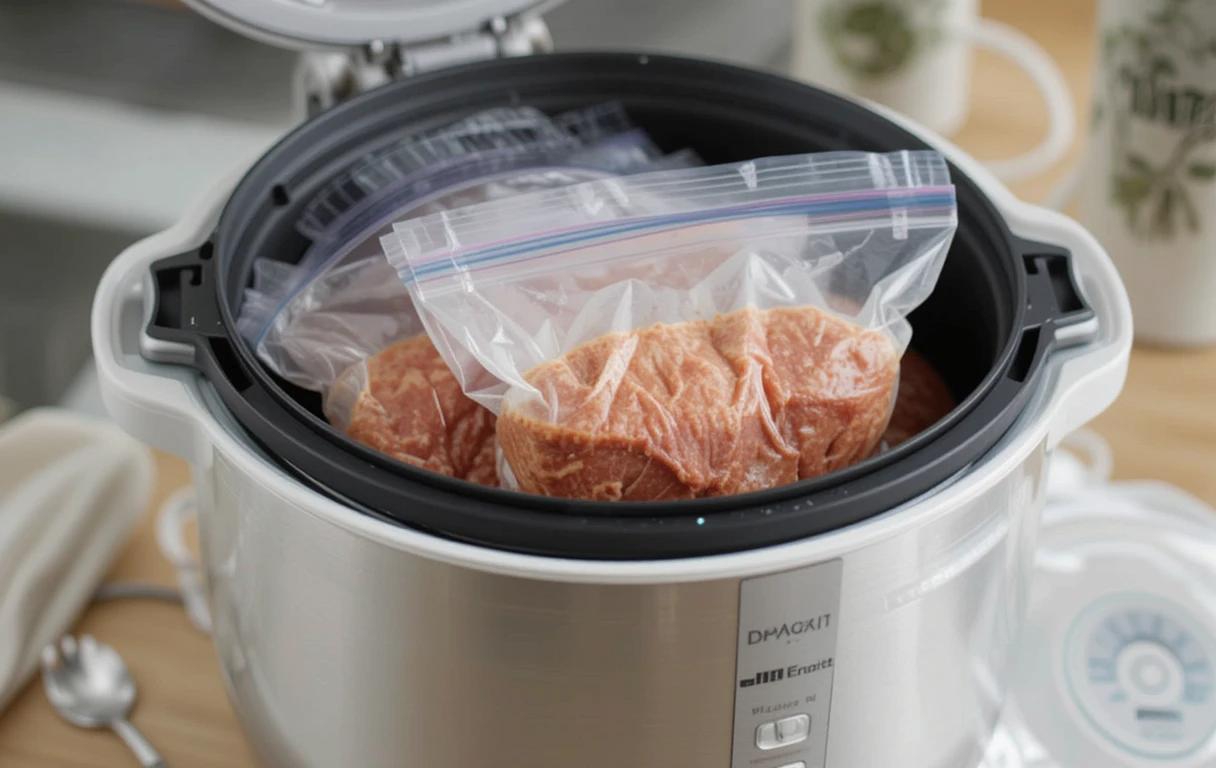What is the best thing to make sous vide?
Sous vide cooking has become increasingly popular for its ability to deliver perfectly cooked meals with minimal effort. The technique, which involves sealing food in a vacuum-sealed bag and cooking it in a precisely controlled water bath, ensures consistent results every time. But what is the best thing to make precision cooking? From juicy steaks to tender chicken and even desserts, precision cooking offers endless possibilities for creating mouthwatering dishes that elevate your culinary game.
In this guide, we’ll explore the top dishes to try precision cooking, why this method works so well, and how you can master it in your kitchen. Whether you’re a sous vide novice or a seasoned pro, there’s something here for everyone. Let’s dive in!
Understanding Sous Vide Cooking
What is Sous Vide Cooking?
Sous vide (French for “under vacuum”) is a cooking technique where food is vacuum-sealed in a bag and submerged in a water bath set to a precise temperature. Unlike traditional methods that rely on guesswork to achieve the desired doneness, precision cooking provides unparalleled control, ensuring every meal is cooked evenly and retains its moisture, texture, and flavor.
This method has gained traction not only in professional kitchens but also among home cooks, thanks to affordable sous vide devices and user-friendly technology.
How Does Sous Vide Work?
- Vacuum Sealing
Food is sealed in a plastic bag, removing as much air as possible to prevent floating and ensure even cooking. - Water Bath and Temperature Control
A sous vide machine or immersion circulator heats water to a specific temperature and maintains it consistently. This ensures the food is cooked precisely without overcooking. - Cooking and Finishing
Once the food reaches its target temperature, you can finish it with a quick sear, broil, or glaze for added flavor and texture.
Example: A sous vide steak cooked to 130°F (54°C) will maintain a perfect medium-rare throughout, unlike a steak cooked on a grill, which might be overdone in some areas and underdone in others.
Benefits of Sous Vide Cooking
Sous vide cooking offers several advantages:
Healthier Cooking
This method requires minimal use of oils and fats, making it an excellent choice for healthier meals.
Precision and Consistency
Set the exact temperature for your desired doneness and never worry about overcooking or undercooking.
Improved Texture and Flavor
precision cooking locks in juices and flavors, enhancing the natural taste of your ingredients.
Convenience and Flexibility
Food can remain in the water bath for extended periods without affecting quality, allowing you to prepare meals ahead of time.
Versatility
From proteins like steak, chicken, and seafood to vegetables, desserts, and beverages, precision cooking is suitable for a wide range of dishes.
Why Choose Sous Vide?
Sous vide is perfect for anyone who loves cooking and is looking to achieve professional-quality results at home. Whether you’re hosting a dinner party or meal-prepping for the week, precision cooking helps take the guesswork out of cooking.
Transition
Now that we’ve covered the basics of sous vide, let’s dive into the top 10 dishes you can make using this revolutionary cooking method. From perfectly cooked proteins to unique desserts, there’s something for everyone to try.
Top 10 Dishes to Cook Sous Vide

1. Perfect Sous Vide Steak
Steak is one of the most popular precision cooking recipes, and for good reason. This method ensures the steak is cooked evenly to your desired doneness, with a juicy, tender texture that’s hard to achieve with traditional methods.
- Recommended Temperature:
- Rare: 125°F (52°C)
- Medium-rare: 130°F (54°C)
- Medium: 140°F (60°C)
- Cooking Time:
1 to 4 hours, depending on thickness. - Tips:
- Season the steak with salt, pepper, and optional aromatics like garlic or rosemary before sealing it in the vacuum bag.
- After sous vide, sear the steak in a hot pan or on a grill for 1–2 minutes per side to achieve a crusty exterior.
2. Tender Sous Vide Chicken Breast
Chicken breasts are notoriously easy to overcook, but precision cooking guarantees tender, juicy meat every time.
- Recommended Temperature:
- Tender and juicy: 145°F (63°C)
- Firm and fully cooked: 165°F (74°C)
- Cooking Time:
1 to 2 hours. - Tips:
- Marinate the chicken in herbs, lemon juice, and olive oil for added flavor before sealing.
- Sear or broil the chicken briefly after precision cooking for a golden-brown finish.
3. Melt-in-Your-Mouth Pork Chops
Sous vide pork chops are juicy and tender, with none of the dryness you often get from pan-frying or grilling.
- Recommended Temperature:
- Medium: 140°F (60°C)
- Medium-well: 145°F (63°C)
- Cooking Time:
1 to 4 hours. - Tips:
- Add a brine or dry rub to the pork chops before sealing them to enhance flavor.
- A final sear with butter, garlic, and herbs will elevate the taste and presentation.
4. Sous Vide Salmon
Salmon cooked sous vide is perfectly flaky and moist, making it ideal for seafood lovers.
- Recommended Temperature:
- Medium-rare: 120°F (49°C)
- Medium: 130°F (54°C)
- Cooking Time:
30 minutes to 1 hour. - Tips:
- Season with lemon, dill, and a touch of olive oil before vacuum sealing.
- Sous vide salmon is delicate, so handle it gently during finishing.
5. Sous Vide Eggs (Onsen Tamago)
Sous vide eggs, inspired by Japanese onsen tamago, are creamy, custard-like, and perfect for breakfast or as a topping for ramen.
- Recommended Temperature:
145°F (63°C) for 45 minutes. - Tips:
- Crack the egg directly over toast, salads, or noodles for a gourmet touch.
- Adjust cooking time slightly for firmer or runnier yolks.
6. Vegetables Cooked Sous Vide
Sous vide isn’t just for proteins! Vegetables like carrots, asparagus, and potatoes come out flavorful and perfectly cooked.
- Recommended Temperature:
- Carrots: 183°F (84°C) for 1 hour.
- Asparagus: 185°F (85°C) for 15 minutes.
- Potatoes: 190°F (88°C) for 1 to 1.5 hours.
- Tips:
- Add butter, garlic, and herbs to the bag for an extra flavor boost.
- For crispy textures, quickly roast or sauté vegetables after sous vide.
7. Sous Vide Lamb Chops
Lamb chops cooked sous vide are tender and flavorful, with perfect doneness throughout.
- Recommended Temperature:
- Medium-rare: 130°F (54°C)
- Medium: 140°F (60°C)
- Cooking Time:
2 to 4 hours. - Tips:
- Use a marinade of olive oil, garlic, and rosemary for rich flavor.
- Finish with a sear for a crispy crust.
8. Sous Vide Duck Breast
Duck breast sous vide is an impressive dish for dinner parties, offering tender meat and crispy skin.
- Recommended Temperature:
- Medium-rare: 130°F (54°C)
- Medium: 140°F (60°C)
- Cooking Time:
2 hours. - Tips:
- Score the skin before cooking for a better crisp when seared.
- Serve with a sweet sauce like orange glaze or cherry reduction.
9. Sous Vide Desserts (Custards & More)
Desserts like crème brûlée or cheesecake are easy to prepare with sous vide.
- Recommended Temperature:
- Custards: 176°F (80°C) for 1 hour.
- Tips:
- Use mason jars for individual portions.
- Chill desserts after cooking for the best texture.
10. Infused Beverages and Cocktails
Sous vide can be used to create infused spirits, syrups, or even cold-brew coffee.
- Recommended Temperature:
135°F (57°C) for 1–2 hours. - Tips:
- Experiment with herbs, fruits, and spices for unique flavors.
- Strain the infusion before serving.
Tips for Choosing the Right Ingredients and Common Mistakes to Avoid

Tips for Choosing the Right Ingredients for Sous Vide Cooking
Sous vide cooking depends heavily on the quality of your ingredients. Since the technique enhances the natural flavors of food, starting with fresh, high-quality ingredients is essential.
1. Choose Fresh and High-Quality Proteins
- Opt for fresh cuts of meat, poultry, or fish. The better the quality of the protein, the more delicious the final dish.
- For steaks, marbling enhances flavor and tenderness.
- If using seafood, ensure it’s fresh or properly frozen to avoid off-flavors.
2. Use Seasonal Vegetables
- Sous vide amplifies the natural sweetness of vegetables, making seasonal produce a great choice.
- Carrots, asparagus, zucchini, and root vegetables perform exceptionally well in sous vide.
3. Enhance Flavors with Herbs, Spices, and Aromatics
- Add garlic, rosemary, thyme, or lemon slices into the vacuum-sealed bag for a flavor boost.
- A pinch of salt and pepper at the start complements most proteins and vegetables.
4. Opt for Sturdy Vacuum-Seal Bags or Containers
- Use BPA-free vacuum bags designed for sous vide cooking to prevent chemical leaching at higher temperatures.
- Mason jars are excellent alternatives for custards, sauces, or infusions.
5. Avoid Overcrowding the Bag
- Leave enough space between ingredients in the vacuum-sealed bag to allow even cooking.
- For multiple portions, use separate bags for consistent results.
Common Mistakes to Avoid in Sous Vide Cooking
Even though sous vide cooking is straightforward, there are common pitfalls to watch out for, especially for beginners.
1. Skipping the Sear
- After sous vide cooking, failing to sear meats results in an unappealing texture.
- Use a hot skillet, grill, or blowtorch to create a golden-brown crust and enhance the flavor.
2. Improper Vacuum Sealing
- Leaving air in the bag can cause floating, leading to uneven cooking. Use a vacuum sealer or the water displacement method to ensure a proper seal.
3. Incorrect Temperature Settings
- Always set the temperature according to the desired doneness of the dish. Using temperatures too high or low can lead to unsatisfactory results.
4. Cooking for Too Long
- While sous vide is forgiving, extended cooking times can affect texture. For example, eggs cooked too long might become rubbery.
- Follow recommended cooking times for each ingredient.
5. Not Drying the Food Before Searing
- Moisture on the surface of proteins prevents a proper sear. Pat dry with a paper towel before finishing.
6. Neglecting Food Safety
- Use pasteurization times for poultry and eggs to ensure food safety.
- Don’t leave food in the water bath at low temperatures for extended periods to avoid bacterial growth.
Expert Tips for Success
- Plan Ahead: Sous vide cooking often requires several hours, so schedule your meals accordingly.
- Experiment with Ingredients: Try combinations of spices and marinades to discover new flavors.
- Invest in a Reliable Sous Vide Machine: Devices with precise temperature controls make all the difference.
Frequently Asked Questions (FAQs) About Sous Vide Cooking
1. What Equipment Do I Need to Cook Sous Vide?
To get started with sous vide cooking, you’ll need a few essential tools:
- Immersion Circulator: This device heats and circulates the water to maintain a precise temperature. Popular brands include Anova and Joule.
- Vacuum Sealer and Bags: Vacuum sealing removes air, ensuring even cooking. Alternatively, use the water displacement method with resealable plastic bags.
- Container or Pot: Any deep, heat-safe container or pot can be used as the water bath. For larger batches, consider a sous vide-specific container with a lid.
- Finishing Tools: A cast-iron skillet, grill, or blowtorch is great for searing meats post-cook.
2. Can You Sous Vide Frozen Food?
Yes, sous vide is an excellent method for cooking frozen food. In fact, many chefs prefer vacuum-sealing and freezing pre-seasoned proteins for convenient, ready-to-cook meals.
- Tips for Cooking Frozen Food:
- Add an additional 30 minutes to the recommended cooking time.
- Ensure the food is vacuum-sealed to avoid water seeping into the bag.
- Best Frozen Foods for Sous Vide:
- Steaks, chicken breasts, fish filets, and vegetables all cook perfectly from frozen.
3. How Long Can Food Stay in the Sous Vide Bath?
One of the benefits of sous vide is its flexibility. While most recipes provide a range of cooking times, you can leave food in the bath longer without overcooking.
- Proteins:
- Steaks: 1–4 hours.
- Chicken: 1–2 hours.
- Pork chops: 1–4 hours.
- Eggs:
- Best cooked within 45–60 minutes to maintain texture.
- Vegetables:
- Most require 15 minutes to 1 hour, depending on the type.
Warning: Leaving food in the bath for too long can sometimes result in a mushy texture, especially for delicate proteins like fish.
4. Is Sous Vide Cooking Safe?
Yes, sous vide cooking is safe when proper guidelines are followed. Maintaining the correct temperature and time ensures food is pasteurized, eliminating harmful bacteria.
- Key Safety Tips:
- Always vacuum-seal food to minimize exposure to bacteria.
- Cook at pasteurization temperatures:
- Poultry: 165°F (74°C).
- Beef and lamb: 130°F (54°C) or above.
- Use a thermometer to verify water bath temperatures.
5. What Are the Benefits of Cooking Sous Vide?
Sous vide offers a host of advantages that traditional cooking methods can’t match:
- Precision Cooking: Set your preferred temperature and never worry about overcooking again.
- Enhanced Flavor: Sealing food locks in juices and prevents moisture loss.
- Convenience: Sous vide allows flexibility, letting you cook ahead without compromising quality.
- Versatility: Use sous vide for proteins, vegetables, desserts, and even beverages.
6. Can You Reheat Food with Sous Vide?
Yes, sous vide is one of the best methods for reheating food. Unlike microwaves or ovens, sous vide reheats food evenly and without drying it out.
- How to Reheat Sous Vide:
- Set the temperature slightly below the original cooking temperature to avoid overcooking.
- For example, if a steak was cooked to 130°F (54°C), reheat it at 125°F (51°C) for 30–45 minutes.
Conclusion: Elevate Your Cooking with Sous Vide
Sous vide cooking has revolutionized the way we approach food preparation, offering unmatched precision and versatility for home chefs and professionals alike. Whether you’re crafting the perfect medium-rare steak, achieving tender chicken, or experimenting with desserts, this method unlocks a level of consistency that traditional cooking methods struggle to achieve.
Why Sous Vide Is Worth Trying
The ability to control temperature to the exact degree makes precision cooking a foolproof way to cook. It allows you to explore a variety of dishes, from simple weekday meals to gourmet creations for special occasions. Beyond just taste and texture, precision cooking cooking also saves time and reduces stress in the kitchen.
Here’s why you should embrace sous vide cooking in your kitchen:
- Enhanced Flavor Profiles: With precision cooking, the natural juices and aromas of your ingredients are preserved and amplified.
- Foolproof Results: Say goodbye to overcooked meals. Every dish is prepared exactly how you want it.
- Creative Opportunities: From infused cocktails to custards, precision cooking opens the door to culinary creativity.
- Healthier Cooking: The need for excess oil or fat is reduced, letting you enjoy healthier meals.
Related Recipes
- “Tuna Tomato Sauce Pasta Recipe“: A tomato-based recipe showcasing another way to use tomatoes.
- “Baked Chicken Fettuccine Alfredo with Broccoli“: Another comforting dish that can be complemented with tomato-based sauces.
Ingredient-Focused Content
- “Lions Mane Mushroom Recipe“: Suggest using a tomato gravy as a flavorful addition for plant-based dishes.
Cooking Techniques and Enhancements
- “Mango Habanero Salsa“: Explore complementary uses of sauces and gravies for flavor diversity.

